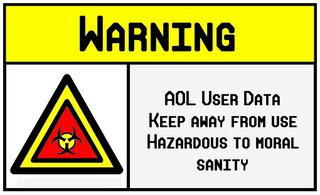See previous post.
I finally got my Files and Folders situation managed. It took part of the afternoon, but it looks to be in much better shape that I had hoped.
I ended up using the software category listing on portablefreeware as my model. I kept the major categories and then made additional sub-folders accordingly. I didn't use all they have, but most of them. I also added some more specific breakdowns for my applications that they don't have categories for. Took me a while to make all those folders and sub-folders, but it wasn't as dreadful as I expected.
I placed them all under a master folder called "Standalone Applications." This is to differentiate from those programs that are installed into my system and kept in the "Program Files" folder.
I then went through all the various folders I had scattered the programs into and then transfered them into their new homes.
Finally, I had to deal with all those Windows shortcut links I broke in the process. I took a two-prong attack to address this issue.
First, I just clicked all the shortcuts I could find that I could see were broken. In most cases Windows did its search and was able to quickly locate the file's new location and fixed the link. In a few cases I had to browse for where I had moved the file.
Second, I then had to find all the buried shortcuts that I have long since forgotten. How to do that?
Option One: Run a Windows file search for *.lnk files and then check them all out. Negatory, private! Too much work! Drop and give me 30 for even thinking about this!
Option Two: Use ToniArt's EasyCleaner (freeware). Helpful application that does ton's of Windows system cleaning activities. One of which is to find invalid shortcuts. Except that it seems to be limited to the locations it searches shortcuts for. A good similar application is CCleaner (freeware). (Also in a "portable" flavor.)
Option Three: Use Digital Architects Orphans Remover (freeware). Wowzers! This baby rocks! It will scan just about every location on your system, or custom locations. You can have it scan specific folder locations as well. I ran it and it very quickly located 445 invalid shortcuts on my entire system! I then was able to go through and either let Windows validate the correct locations (some were worth doing) or just delete them individually or en masse. Sweet! This little gem is staying tucked away on my system for sure! It's to "shortcut cleaning" as AM-Deadlink is to "bookmark cleaning".
In no-time flat I had all my shortcuts validated and my pc housecleaning was completed.
Bonus Tool Tips:
Duplicate File Checkers.
I had expected I would need to find where I have duplicate program files, but in the end, I had very few. I had one tool on standby: Double Killer (freeware).
I also ended up locating another beautiful program: DupKiller (freeware) . The website is a little slow loading, and I recommend going for the zip file download (as opossed to the .exe version) but once downloaded and installed, this is a kick-butt gem for finding duplicate files on your system. The GUI interface is very nicely designed and the tools are very logical in placement. It really ripped across my system in almost no-time flat. There are a ton of options and filters you can set. Faithful fans would do well to add this one to their utility list. And yes, you can copy the application's program folder to another location and uninstall it, then run the copy. It doesn't write to the registry (that I could tell by monitoring) and you can save the preference and settings file to anywhere you want.
Registry Monitors
When I install and use a new application I like to see what it is saving on my computer. Two tools that I use to monitor my registry are MJ Registry Watcher (freeware) and WhatChanged (freeware). WhatChanged allows you to take a "snapshot" of your registry, run a program or process, then when you are done, take another snapshot and compare the two for registry differences. Simple. RegWatcher monitors the registry (and other areas as well) and alerts you when items are written and logs them. It has an extensive number of options and configuration settings, but remains very simple to use.
Finally, if you want something with a little more meat and potatoes, check out Epsilon Squared's InstallWatch. The page is way-short of any useful information so this program is really one stumbles upon by word of mouth. Check out Tejas Consulting's review of it from 2003. It seems to be a very balanced review.
If anyone knows of any additional "system snapshot" tools like these, feel free to drop a tip in the comments.
See you in clearing skies,
--Claus






